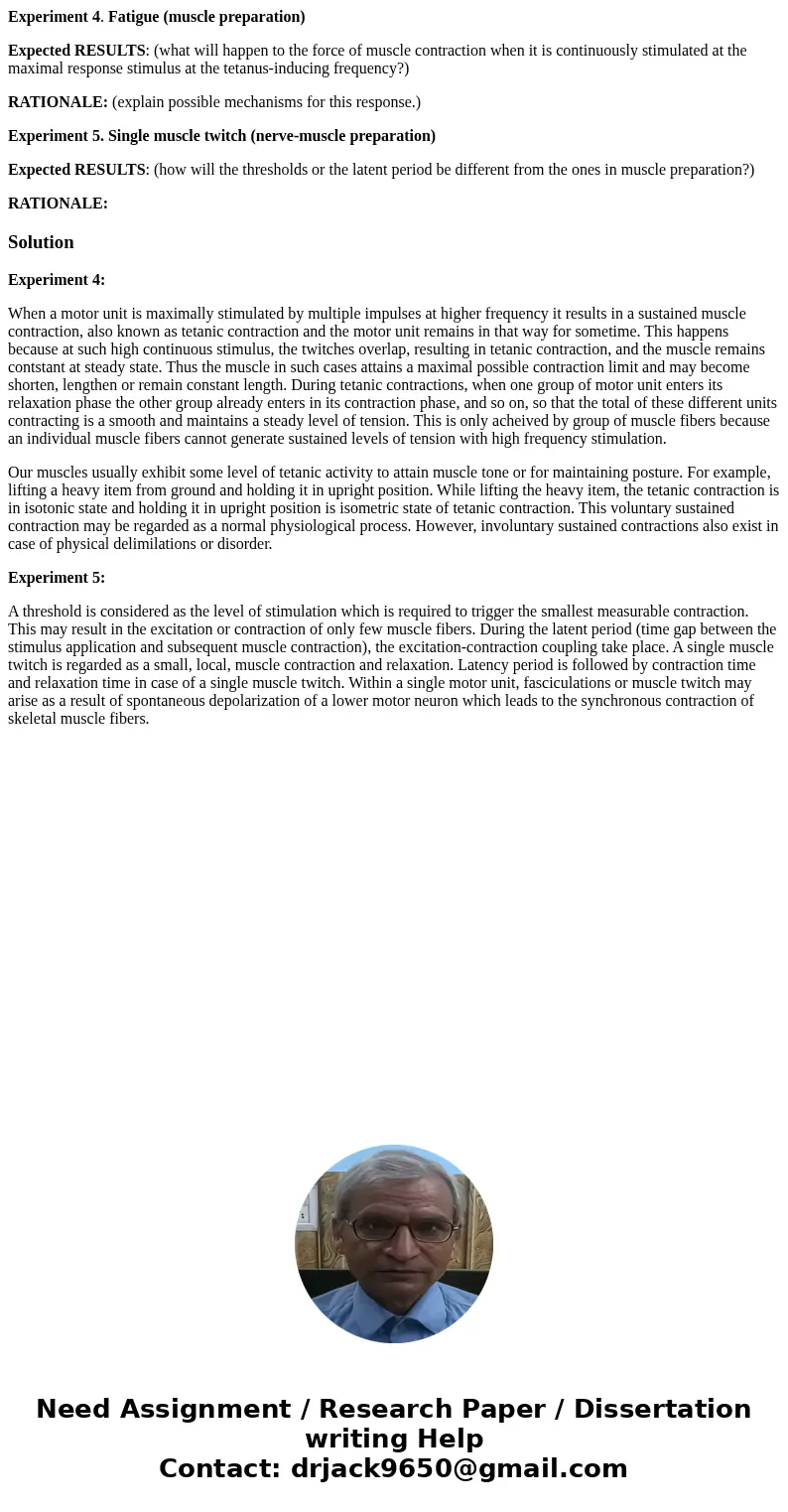Experiment 4 Fatigue muscle preparation Expected RESULTS wha
Experiment 4. Fatigue (muscle preparation)
Expected RESULTS: (what will happen to the force of muscle contraction when it is continuously stimulated at the maximal response stimulus at the tetanus-inducing frequency?)
RATIONALE: (explain possible mechanisms for this response.)
Experiment 5. Single muscle twitch (nerve-muscle preparation)
Expected RESULTS: (how will the thresholds or the latent period be different from the ones in muscle preparation?)
RATIONALE:
Solution
Experiment 4:
When a motor unit is maximally stimulated by multiple impulses at higher frequency it results in a sustained muscle contraction, also known as tetanic contraction and the motor unit remains in that way for sometime. This happens because at such high continuous stimulus, the twitches overlap, resulting in tetanic contraction, and the muscle remains contstant at steady state. Thus the muscle in such cases attains a maximal possible contraction limit and may become shorten, lengthen or remain constant length. During tetanic contractions, when one group of motor unit enters its relaxation phase the other group already enters in its contraction phase, and so on, so that the total of these different units contracting is a smooth and maintains a steady level of tension. This is only acheived by group of muscle fibers because an individual muscle fibers cannot generate sustained levels of tension with high frequency stimulation.
Our muscles usually exhibit some level of tetanic activity to attain muscle tone or for maintaining posture. For example, lifting a heavy item from ground and holding it in upright position. While lifting the heavy item, the tetanic contraction is in isotonic state and holding it in upright position is isometric state of tetanic contraction. This voluntary sustained contraction may be regarded as a normal physiological process. However, involuntary sustained contractions also exist in case of physical delimilations or disorder.
Experiment 5:
A threshold is considered as the level of stimulation which is required to trigger the smallest measurable contraction. This may result in the excitation or contraction of only few muscle fibers. During the latent period (time gap between the stimulus application and subsequent muscle contraction), the excitation-contraction coupling take place. A single muscle twitch is regarded as a small, local, muscle contraction and relaxation. Latency period is followed by contraction time and relaxation time in case of a single muscle twitch. Within a single motor unit, fasciculations or muscle twitch may arise as a result of spontaneous depolarization of a lower motor neuron which leads to the synchronous contraction of skeletal muscle fibers.

 Homework Sourse
Homework Sourse